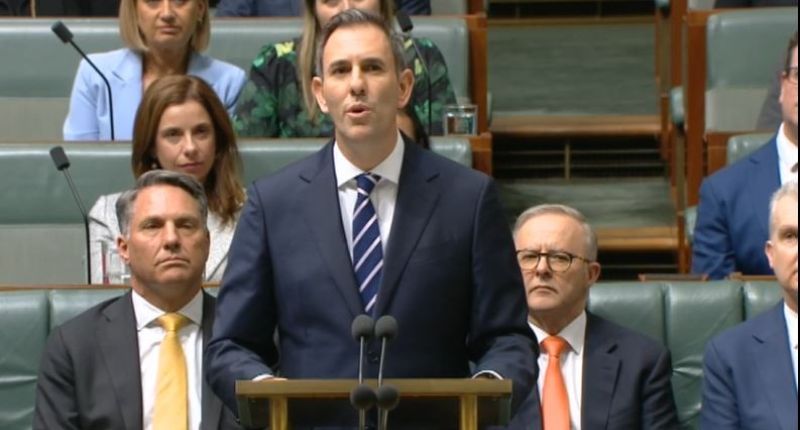
- Budget measures on housing affordability broadly welcomed
- Housing supply remains a major issue
- Energy efficiency also cited as a win in the Budget
Yesterday’s federal budget has received a mixed response from the real estate industry.
While increased levels of migration and the focus on housing affordability were noted as wins, housing supply remains a major challenge, and concerningly, builders might be seen as one of the losers in the 2023 Budget.
Among the measures announced:
- An increase of $2 billion in affordable and social housing debt through the National Housing Finance and Investment Corporation (NHFIC),
- At least 1,200 affordable and social houses in each state and territory, provided through the Housing Affordability Future Fund (HAFF),
- Halved Managed Investment Trust (MIT) Withholding Tax from 30% to 15% to encourage build-to-rent (BTR),
- A 15% increase in Commonwealth Rent Assistance (CRA),
- Broadened access to the three major Housing Guarantee Schemes,
- Increased funding of $67.5 million to tackle homelessness, and
- A renewed commitment to cities, including $211 million to fund the Thriving Suburbs Program, $159.4 million for the Urban Precincts and Partnerships Program, and $11 million to reinstate the State of Cities report.
Net overseas migration figures were also revised, the previous projection for 2022-2023 was 235,000, now 400,000, and 315,000 for 2023-2024.
UDIA National welcomes affordability measures.
The Urban Development Institute of Australia (UDIA) National has congratulated Federal Government on its latest budget for the focus on housing supply as an essential strategy to support vital population growth and economic repair.
“It’s hugely positive to see the May Budget take further steps to bolster housing attainability, ownership, affordable and social housing, as well as removing some of the inhibitors to Build to Rent,” said Max Shifman, UDIA National President.
The body said the initiatives within the Budget “are a great start”, but there is more work to be done to boost housing supply, particularly with the higher projected levels of migration.
“The success of Government’s economic strategy swings on the ability of Australia to take pressure off housing rental and ownership which are vital factors impacting cost of living, transport, city building, health, infrastructure, access to jobs, immigration and productivity,” UDIA National said in a media statement.
Among other challenges within the housing sector, the body said its analysis found that greenfield and apartment costs are rising while approvals are dropping. All of this occurs against a backdrop of tighter financial lending, rising costs of lending, and higher interest rates.
UDIA National added that it is “… keen to see the Housing Affordability Future Fund (HAFF) pass through parliament, together with a broader housing plan that harnesses private housing providers, CHP’s and investors through incentives that build on their capability and capital, to stretch government funds further.”
MBA says Budget is a “missed opportunity”
Master Builders Australia (MBA) has expressed its disappointment in the Budget, with business productivity, not a focal point.
The industry body said in a media statement that the Budget, “… has missed an opportunity to appropriately boost business productivity, a critical tool in the inflation-busting toolkit.”
Master Builders Australia CEO Denita Wawn said that reducing the cost of doing business is just as important as reducing the cost of living.
“The measures to support SMEs on specific issues including greater flexibility for the ATO to support small business navigate tax issues, increase to the instant asset write-off, small business energy incentive and relief fund, and digital technology uptake will be of assistance,” said Wawn.
“Nevertheless, it was disappointing that business productivity was not a centrepiece of the budget.”
Denita Wawn, Master Builders Australia CEO
Wawn said challenges remain for the building and construction industry, noting the body has previously called for measures to reduce red tape on business and improve capacity to deliver projects in a cost-effective way.
“Our industry has moved backwards over recent years in terms of its productivity performance. The budget has missed a chance to allow for more favourable outcomes when it comes to the cost, quality and quantity of building and construction output,” said Wawn.
“The large economic footprint of the building and construction sector means that better productivity in our industry will flow to many corners of the whole economy and benefit the living standards for Australians.
“A cloud of uncertainty now hangs over the next tranche of industrial relations legislation,” said Wawn, calling on the government to avoid “productivity-sapping changes” that will undermine the fabric of small business: flexibility, entrepreneurship and choice.
Among other industry challenges, some half a million new building and construction workers are expected to be needed by the end of 2026.
Property Council warns housing shortages could be “handbrake” on the inflow of skilled migrants
The industry body has welcomed several measures in the Budget, but like many others, has raised concerns over housing supply in Australia.
The Property Council of Australia (PCA) said the government must “… match its targeted approach to migration with the same focus on housing investment and better planning across the country.”
This made all the more poignant as dwelling investment levels are predicted to drop, revised down from a forecast -1% growth to -3.5% in 2023-2024.
“Reviewing the budget: growing our national skills base to keep the economy firing, tick, build-to-rent housing, tick, cities policy, tick, energy efficiency incentives, tick. Investment in housing, question mark.”
Mike Zorbas, Property Council Chief Executive
While skilled migrants have been a key part of Australia’s economic success for generations, Zorbas highlighted the need for more housing, now.
“The population growth outlined in this budget highlights the need for faster and better housing delivery and planning across our cities. The Senate should strongly consider passing the government’s Housing Australia Future Fund this week to end current delays in delivering 40,000 new social and affordable homes across the nation.”
The $1.3 billion boost to home energy efficiency through the Household Energy Upgrade Fund was welcomed, so too was the lowered MIT to 15% and increased Commonwealth Rent Assistance.
AIA welcomes sustainability measures and commitment to cities
The Australian Institute of Architects (AIA) has warmly welcomed a number of the announcements made in yesterday’s Budget.
“We welcome the government’s prioritisation of housing as a key issue in this year’s Budget,” said The Institute’s National President Shannon Battisson.
“These initiatives will help to unlock Australia’s housing challenge. We will continue to support greater investment from the Australian and state governments into public housing.”
While the wins for community housing supply and BTR were welcomed, the Institute’s National President Shannon Battisson has called for more investment in public housing.
Battisson also welcomed the measures taken to improve energy efficiency, calling it a win-win for both housing and energy reductions.
Among the other measures the Institute was “heartened” to see were investment into the Thriving Suburbs Program, Urban Precincts and Partnerships Program; and the reinstatement of the State of Cities report.







